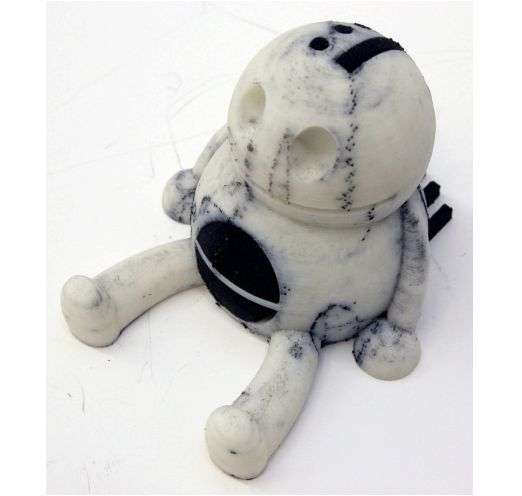September 18, 2015 weblog
A 3D printing method embeds interactivity into printed objects

Talk about rapid prototyping—A team from the Human Media Lab of Queen's University in Canada have been exploring a way of being able to integrate touch and pressure sensors directly into 3D-printed objects.
PrintPut is the name of the method they came up with.
The lab team presented their 3D printed touch and pressure sensors earlier this week at the INTERACT 2015 conference in Bamberg, Germany, an event which focuses on human-computer interaction. Also, the researchers presented a video earlier this week about their "resistive and capacitive input widgets for interactive 3D prints."
Evan Ackerman in IEEE Spectrum performed the translation: He said the Ontario researchers "have combined conductive filament with a dual-extruder 3-D printer to create a way to print objects with sensors in them all in one shot."
In their paper, "PrintPut: Resistive and Capacitive Input Widgets for Interactive 3D Prints," they spell out why their method can make a difference for product designers coping with limitations in physical prototyping.
They said while physical prototyping is useful "for informing the aesthetic and ergonomic qualities of a product, the results are typically non-interactive."
That is why there is an active research area surrounding augmenting physical prototypes with touch sensors. Trouble is, designers must use these solutions after making a physical prototype.
"Wrapping a physical object with external sensors may disrupt the crafted shape that a designer is exploring, or may not be possible on complex geometries," they stated.
They worked up PrintPut as a method to create input sensors on 3D printed objects.
All in all, What does PrintPut do for product designers? Evan Ackerman explained: "These elements can be integrated into just about any surface, not just flat ones, which opens up tons of creative options to designers, and said designers can leave most of the tricky CAD stuff up to software scripts."
Ackerman described what you would need to do with PrintPut: You would "design a CAD model just like you would normally and then use a plugin to define points and curves for the interactive areas. The software then figures out how to integrate all of the conductive channels, and you end up with two interlocking 3-D models: your original CAD design with all of the conductive areas hollowed out of it and conductive pathways to fill those areas. Send it along to your dual-extruder 3-D printer, and then go get a latte, because you're pretty much done."
He said when the print is complete, you "attach alligator clips to the 3-D–printed conductive terminals leading to each sensor, and then wire it all up with an Arduino or some other microcontroller."
The team members believe "it is increasingly important for industrial designers to start considering digital interactivity earlier in their design process."
In their paper, they proceeded to present a collection of interactive widgets that a designer can integrate into models to help inform decisions when prototyping, including buttons, pressure sensors, sliders, touch pads, and flex sensors.
More information: PrintPut: www.hml.queensu.ca/printput/
Burstyn, J., Fellion, N., Strohmeier, P., and Vertegaal, R. PrintPut: Resistive and Capacitive Input Widgets for Interactive 3D Prints. In Proceedings of INTERACT 2015. Springer Berlin Heidelberg, 2015, pp. 332-339. www.hml.queensu.ca/s/PrintPut.pdf
© 2015 Tech Xplore















